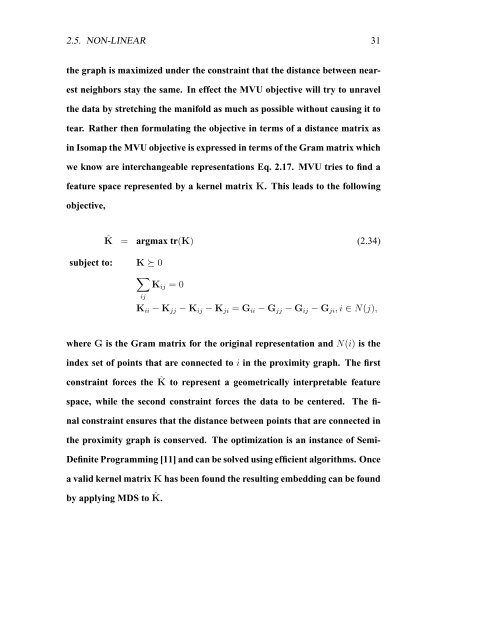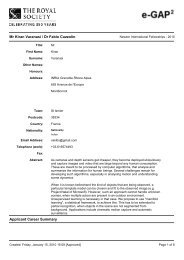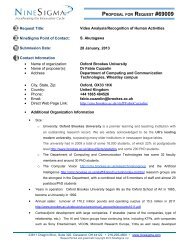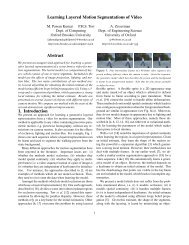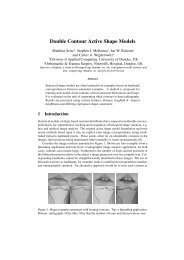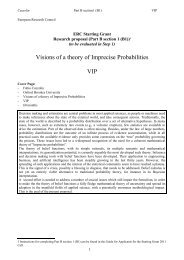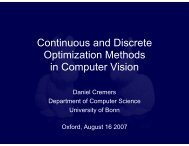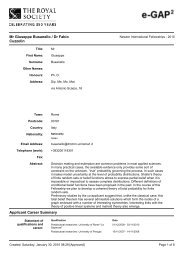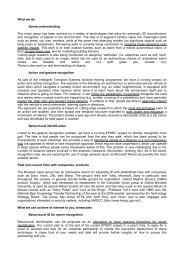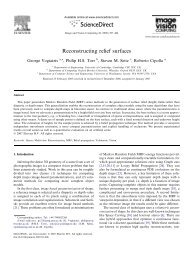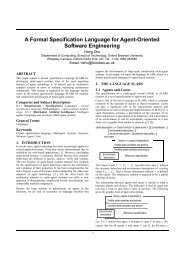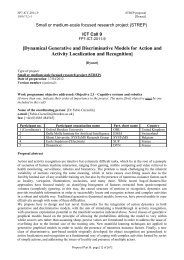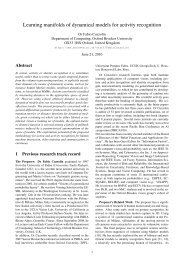Shared Gaussian Process Latent Variables Models - Oxford Brookes ...
Shared Gaussian Process Latent Variables Models - Oxford Brookes ...
Shared Gaussian Process Latent Variables Models - Oxford Brookes ...
Create successful ePaper yourself
Turn your PDF publications into a flip-book with our unique Google optimized e-Paper software.
2.5. NON-LINEAR 31<br />
the graph is maximized under the constraint that the distance between near-<br />
est neighbors stay the same. In effect the MVU objective will try to unravel<br />
the data by stretching the manifold as much as possible without causing it to<br />
tear. Rather then formulating the objective in terms of a distance matrix as<br />
in Isomap the MVU objective is expressed in terms of the Gram matrix which<br />
we know are interchangeable representations Eq. 2.17. MVU tries to find a<br />
feature space represented by a kernel matrix K. This leads to the following<br />
objective,<br />
ˆK = argmax tr(K) (2.34)<br />
subject to: K 0<br />
<br />
Kij = 0<br />
ij<br />
Kii − Kjj − Kij − Kji = Gii − Gjj − Gij − Gji, i ∈ N(j),<br />
where G is the Gram matrix for the original representation and N(i) is the<br />
index set of points that are connected to i in the proximity graph. The first<br />
constraint forces the ˆ K to represent a geometrically interpretable feature<br />
space, while the second constraint forces the data to be centered. The fi-<br />
nal constraint ensures that the distance between points that are connected in<br />
the proximity graph is conserved. The optimization is an instance of Semi-<br />
Definite Programming [11] and can be solved using efficient algorithms. Once<br />
a valid kernel matrix K has been found the resulting embedding can be found<br />
by applying MDS to ˆ K.


